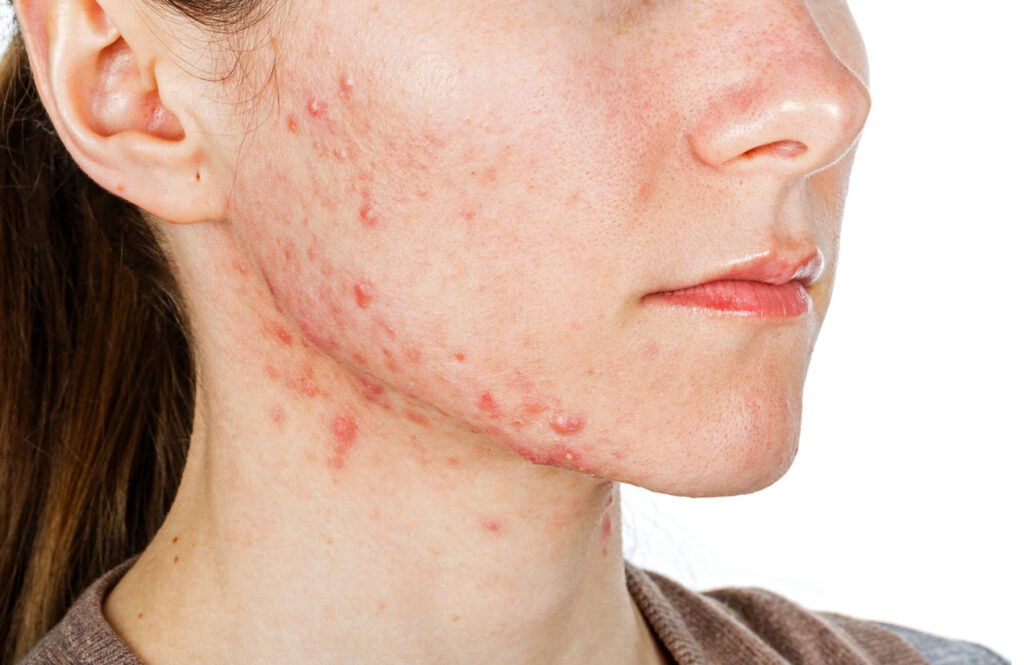While acne involves excess production of lipids in the hair follicles, keratinocyte hyperkeratinization, bacterial interaction and a host of inflammatory responses involving macrophages, little has been understood about the cascade of dysregulated signaling pathways that results in acne-affected skin until now.
Using cutting-edge bioinformatics techniques for gene identification and sequencing, Min Deng, PhD, in the George W. Agak Laboratory and colleagues at the David Geffen School of Medicine at UCLA are the first to comprehensively map signaling pathway distributions in both normal and acne-affected skin. (See our recent feature on the exciting work taking place in Dr. Agak’s lab)
Their analysis identified two key dysregulated pathways: GRN-SORT1 axis in TREM2 macrophages and the IL-13-IL-13RA1 axis in keratinocytes, both consistently upregulated in acne lesions. Specifically, their comparative analysis revealed changes in 49 individual pathways amongst seven different cell types in healthy versus affected skin.
The findings suggest that modulating these dysregulated signaling pathways through gene therapy could be a promising approach for the development of new acne treatments, especially those that target the early stage of lesion development.
The study is published in Cell Communication and Signaling.


